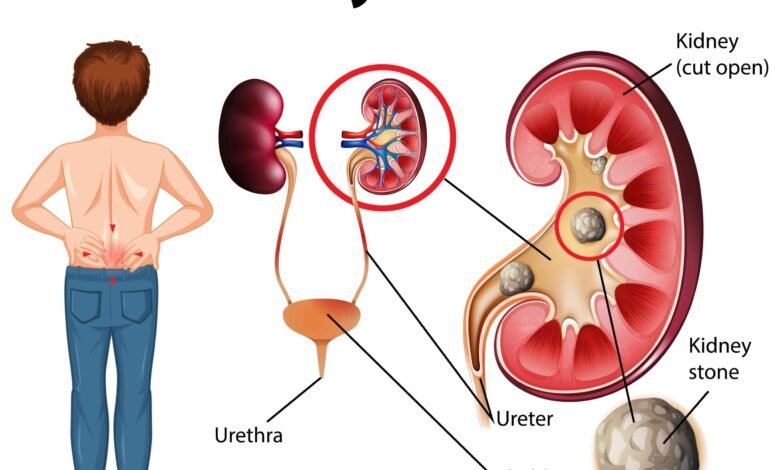
Kidney stones are more than just a difficult health issue—they’re a developing concern around the world. Understanding what they are, how they shape, and what can be done to avoid and treat them is significant. This point by point guide takes you step-by-step through everything you would like to know, utilizing plain language, real-life advice, and up-to-date medical bits of knowledge. Whether you’ve managed with them some time recently or are attempting to dodge them inside and out, this direct is for you.
Introduction to Kidney Stones
Imagine little, hard deposits shaping inside your kidneys. That’s precisely what kidney stones are. They’re made of minerals and salts—like calcium, oxalate, and uric acid—that joins together in concentrated pee. These stones can change in size, from as little as a grain of sand to as expansive as a golf ball, and they may remain within the kidney or travel down the urinary tract.
The real inconvenience starts when a stone moves. That’s after you get the infamous kidney stone pain, regularly described as worse than childbirth. This sharp, cramping torment can hit your side, lower back, or crotch, and it’s more often than not sudden and seriously.
Most kidney stones don’t cause lasting harm, particularly when caught early. But ignoring them? That can lead to diseases, kidney harm, and other complications.
Types of Stones
Knowing the sort of kidney stone you’ve got can help tailor treatment and anticipate future stones. Here are the four primary sorts:
Calcium Stones
These are the foremost common type—about 80% of all kidney stones. They’re frequently made of calcium oxalate but can moreover shape from calcium phosphate.
Why they form:
- High calcium within the pee
- High oxalate levels from nourishments like spinach, beets, or nuts
- Low liquid intake
In spite of the title, kidney stones are not caused by eating as well much calcium. In truth, a low-calcium diet can now and then raise your chance. Instead, it’s around how your body forms calcium.
Prevention tip: Remain hydrated and constrain high-oxalate nourishments on the off chance that you’re inclined to these.
Uric Acid Stones
These stones form in individuals who lose too much liquid, eat high-protein diets, or have gout. Uric acid can crystallize in acidic pee, shaping stones.
Risk components:
- Lack of hydration
- High-purine count calories (think red meat, shellfish, and organ meats)
- Certain genetic conditions
Great to know: These stones can sometimes be broken up with solutions that alkalize the pee.
Struvite and Cystine Stones
Struvite Stones:
These develop rapidly and can become expansive, indeed filling the kidney. They’re ordinarily caused by urinary tract infections (UTIs) with microscopic organisms that produce alkali.
Cystine Stones:
These type of Kidney Stones are uncommon and hereditary. Individuals with cystinuria leak too much cystine (an amino acid) into the pee, which shapes crystals.
Treatment frequently requires:
- Forceful hydration
- Particular medications
- In some cases surgery
Recognizing your stone sort makes a difference your specialist prescribe the proper diet, liquids, and solutions.
Symptoms of Kidney Stones
It’s not always easy to tell when you’ve got a kidney stone—until the pain hits. But some symptoms can give you an early warning.
Common Signs to Watch For Stones
Here’s what many people experience:
-
Severe pain in the side or back, below the ribs
-
Pain that radiates to the lower abdomen or groin
-
Waves of pain that come and go
-
Burning during urination
-
Pink, red, or brown urine (blood)
-
Cloudy or foul-smelling urine
-
Frequent urge to urinate, often in small amounts
-
Nausea and vomiting
The pain can be so bad that many people end up in the emergency room, especially if the stone is moving or blocking urine flow.
When to See Medical Help?
Some signs mean you need immediate medical attention:
-
Fever and chills (may indicate infection)
-
Inability to urinate
-
Pain so severe you can’t sit still
-
Persistent vomiting